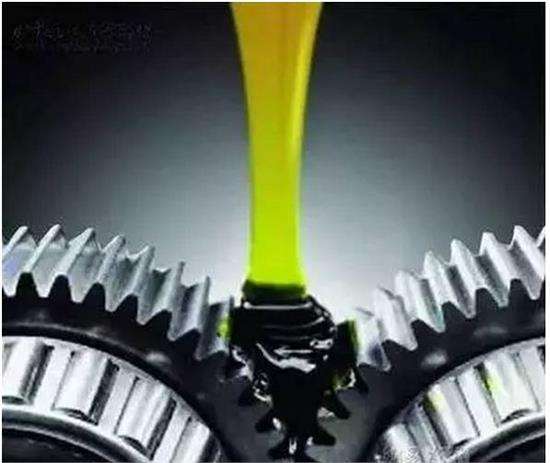Selection and Usage of Lubricating Grease for Engineering Machinery
2017-07-20
I. Main performance index of lubricating grease
1. Dropping point: it is the temperature to make the grease have certain mobility by give heating under specified conditions. In general, it can decide the application temperature of lubricating grease (the dropping point will be higher than the application temperature by 15-30°C).
2. Cone penetration: it is the depth (unit 1/10mm) that the test cone penetrates freely and vertically into the grease after 5 seconds under the specified temperature and load. It is the index to measure the consistency and hardness of the grease.
3. Colloid stability (oil separation): it is the oil saving capacity in the framework of thickener influenced by exogenic action. It is judged by the amount of oil separation. When the amount is bigger than 5%-20%, this lubricating grease can not be used any more.
4. Oxidation stability: it is the capacity of oxidation resistance during storing and using.
5. Mechanical stability: it is the capacity of consistency changing resistance under mechanical working conditions. If the mechanical stability is bad, it will easily cause the decrease of consistency of lubricating grease.
6. Evaporation loss: it is the proportion of the loss under specified conditions. It is an important factor which influences the service life of lubricating grease.
7. Water resistance: it is the capacity that does not solve in water, does not absorb water from surrounding objects and will not be washed by water.
8. Similarviscosity: it is the ratio of shear stress and shear speed as non-Newtonian fluid. When the rotating speed is high, the viscosity is low, and vice versa.
II Failure analysis of lubricating grease
1. Failure caused by physical factors
During the using, lubricating grease will be influenced both by mechanical shearing and centrifugal force. The lubricate grease will be thrown out of the friction interface and oil separation will happen, which will result the reducing the oil percentage in the grease, reduce the penetration, and caused the hardening. When this condition goes up to certain degree, the lubricate grease will lose the efficacy totally. Influenced by mechanical shearing, the structure of lubricating grease will be broken (such as curd fibersdisconnection and orientation), which will cause softening, decreasing of consistency and increasing of oil separation. In the end, the lubricating grease will lose the efficacy. Under normal conditions, if the using rotating speed is added by 2000r/min, the service life of lubricating grease will be reduced by half. Under high shear stress condition, if the speed is doubled, the service life can only be 1/10 of the original life.
2. Failure caused by chemical factors
Lubricating grease will have oxidation reaction and produce acidic material. This will firstly consume the antioxidant in the grease, and later the produced organic acid will corrode the metal parts and break the grease structure to make the dropping point, based oil consistency and mobility become worse. Massive tests have proven that the higher the temperature is, the more the grease life will be decreased. If the temperature is 90°C -100°C, when the temperature increases 19°C, the grease life will be reduced by half. If the temperature is 100°C -150°C, when the temperature increases 15°C, the grease life will be reduced by half.
Beside the above factor, the water, dust and harmful gases in the working environment of lubricating grease are also the important factors which influence its life. For example, if there are tiny particles of copper, steel, lead or bronze in the lubricating grease, there particles will be the catalyst to oxidation. In a word, there are many reasons of the failure of lubricating grease. It can be one factor, or multi factors, or one factor starts first and other factors work together.
III. Selection of lubricating grease
When select lubricating grease, the main consideration includes working condition (load, speed and temperature), working situation (continuous working, interval working, with or without vibrating or impacting, etc.) and working environment (moisture, temperature, air pollution, etc.).
1. The working temperatureof lubricating grease shall be lower than the dropping point at least by 20-30°C.
If the working temperature is high, lubricating grease with better anti-oxidation, smaller evaporation loss and higher dropping point shall be used. If the working temperature is low, lubricating grease with lower starting torque and smaller similar viscosity shall be used, such as the grease taking mixed oil as base oil.
2. Shall be suitable for rotating speed of friction pair which needs lubrication.
If the rotating speed is high, lubricating grease with bigger cone penetration and made of lower viscosity base oil shall be used. If the rotating speed is low, lubricating grease with higher cone penetration and made of higher viscosity base oil shall be used.
3. Shall be suitable for the load
For big load, lubricating grease with higher viscosity of base oil and higher content of thickener shall be used. For heavy load, lubricating grease with extreme pressure additive or filler (molybdic sulfide or graphite) shall be used. For small load, lubricating grease with 2# consistency, shorter curd fibers and medium viscosity shall be used.
4. Shall be suitable for the working environment
If the environmentis wet or will contact water, lubricating grease containing better water proof bases of calcium, lithium and compound lithium shall be used. If the dust is heavy, lubricating grease with higher thickness (higher grade) shall be used, so the tightness will be better to avoid impurities mix into friction pair. If there are strong chemical media, synthetic lubricating oil such as fluorine-carbon grease with better chemical resistance shall be used.
5. Shall be suitable for the supply method of friction pair
For centralizationsupply, 00~1# lubricating grease shall be used. For the parts supplied by grease gun or cup, 1~3# lubricating grease shall be used. For the positions where do not need to replace grease in long term, 2# or 3# lubricating greases shall be used.
6. Shall be suitable for the working condition of friction pair
If the vibration is big, the grease shall have higher viscosity and adhesion and better vibration reduction, such as complex soap grease with high viscosity naphthenic base or mixed base.
7. Shall be suitable for its application
For lubrication application, the grease shall be selected based on the type, working condition, working situation, environment condition and grease supply method of the friction pair. For protection, the grease shall protect the metal from corrosion, such as the parts may contact seawater. Aluminum base lubricating grease with strong adhesive capacity and water resistance shall be selected. For general protection, lubricating grease made of solid alkene high viscosity base oil can be used. For sealing, the focus shall be paid to the resistance to be dissolved by the sealed medium.
8. Shall reduce the grease types to increase economic profit
Based on the premise of meeting the application requirement, it is better to use multiple-effect general-purpose lubricating greases with lithium based grease, complex soap base grease or polyuria grease. In this way, it reduces the grease types and simplify the grease management, and also because multiple-effect grease has a longer life, so the grease cost and maintenance cost are reduced.
IV. Usage of lubricating grease
1. The filling amount shall be proper
If the amount is big, the friction torque will be big, the temperature will be increased, so more grease will be consumed. If the amount is less, the lubrication will not be enough and dry friction will happen. Generally, the amount shall be 1/3~1/2 of the total space inside the bearing, but this also must be done according to the specific situation. Sometimes the grease shall be pasted to the bearing edge but not inside.
2. Avoid the mix using of different types, grades and new and old greases
Cross use of grease storing vessel and tool shall be avoid. Cross use will have bad influence of dropping point, cone penetration and mechanical stability.
3. Pay attention to the replacement of grease
Because the type and quality of greases are always improved and changed, when changing new grease for old equipment, the test shall be done first. When changing, the old grease shall be removed and the parts shall be cleaned. When adding grease, the waste grease shall be removed until there is new grease at the outlet.
4. Pay attention to the process of replacement
When taking and adding grease, the vessel and tool shall be clean. The inlet shall be clean to avoid any impurities damage.
5. Pay attention to the replacement caused by seasons
If the temperature difference is big such as in summer and winter, the grease shall be used accordingly.
6. Pay attention to the regular filling
The regular filling time shall be done according to the actual using and shall ensure the reliable lubricating without waste.
7. Do not use wooden or paper vessel to pack the grease
To avoid the oil loss to harden the grease, avoid water or impurities contact, and shall be kept in cool and dry place.











